Once again, we did not see the danger coming.
Only an amateur was able to photograph the asteroid 2012 BX34. Yet this near-Earth asteroid had a size of 8-18 meters and came within 76 800 km from Earth, January 27, 2012.
This distance is extremely thin compared to the distances of the solar system.
We have avoided the collision with the asteroid in the day on Friday, January 27, 2012 to 16H, a distance of 0.2 times that of the moon, if one believes NASA page on the near-Earth object (NEO).
Many small rocky bodies called asteroids are present in the solar system, a significant portion of them circulate in a ring between the orbits of Mars and Jupiter between 2 and 4 AU (Symbol: UA) The mean distance from Earth to the Sun. a AU is 149,597,871 km. It is a unit often used for distances in the solar system, or the distance between two stars in a dual system. , in what astronomers call the belt asteroid, also known as main Belt.
It marks the boundary between the terrestrial planets and gas giants. An asteroid is a celestial object is not observable to the naked eye because of its small size, which varies from a few tens of meters to several hundred kilometers in diameter and is part of our solar system.
The objects of less than 50 m in diameter are called meteorites. The size of the object was not enough to do damage to our planet, especially since it probably would not reach the earth's surface, over, he would have fragmented and even sublime.
Let us remember that it is enough of an object 50 meters to make a crater like the famous Meteor Crater in Arizona.
This meteorite, would have produced the same effects as in the fall of the Sikhote-Alin meteorite in 1947. It was fragmented in the atmosphere. | | As the astronomer said Gareth Williams of the Minor Planet Center. BX34 2012 is among the 20 NEO who approached most of the Earth since the early observations.
The most worrying from the astronomer is that the future path of the object BX34-2012 is uncertain and hoped it was picked up by radar, which would analyze its orbital elements accurately to calculate the future orbit. | Name | Size | Discovered | | | | | | Ceres | 959 km | 1801 | | Pallas | 526 km | 1802 | | Vesta | 510 km | 1807 | | Hygiea | 408 km | 1849 | | Davida | 328 km | 1903 | | Interamnia | 316 km | 1910 | | Europe | 302 km | 1858 | | Junon | 268 km | 1804 | | Sylvia | 260 km | 1866 | | Eunomia | 256 km | 1851 | | Euphrosyne | 256 km | 1854 | | Psyche | 254 km | 1852 | | Cybele | 240 km | 1861 | | Bamberga | 230 km | 1892 | | Patientia | 226 km | 1899 |
Image: The largest known asteroids (above). | | 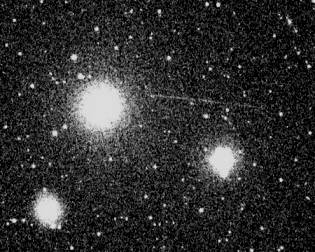 Image: The small signal of the object 2012 BX34 was photographed by an amateur astronomer as a low luminous line.
© Ernesto Guido-Giovanni Sostero-Nick HowesNB: The Lincoln Near-Earth Asteroid Research (LINEAR) is a joint research project of the Air Force, NASA and MIT Lincoln Laboratory. LINEAR robotic telescopes have detected the September 15, 2011, 231,082 asteroids, 2,423 NEO discoveries and 279 comets. |
 Automatic translation
Automatic translation



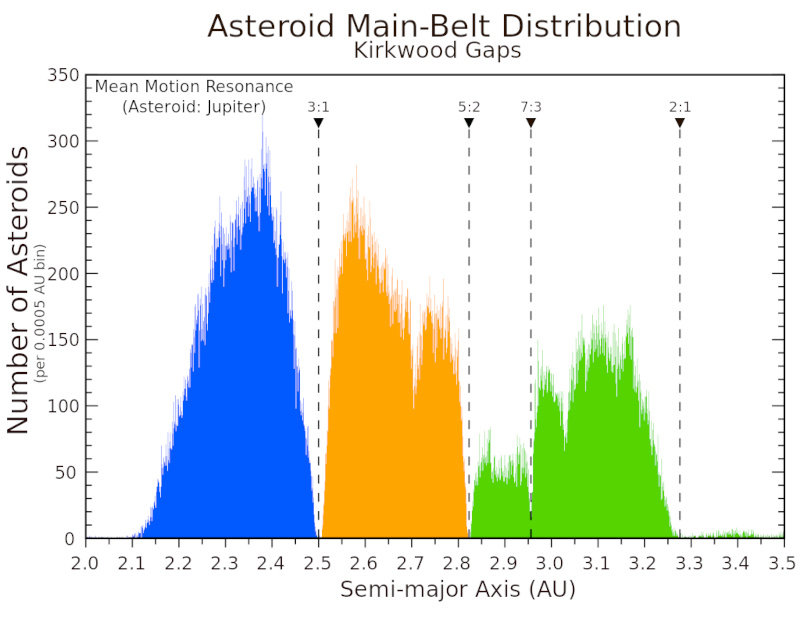 The Kirkwood Gaps in the Main Asteroid Belt
The Kirkwood Gaps in the Main Asteroid Belt
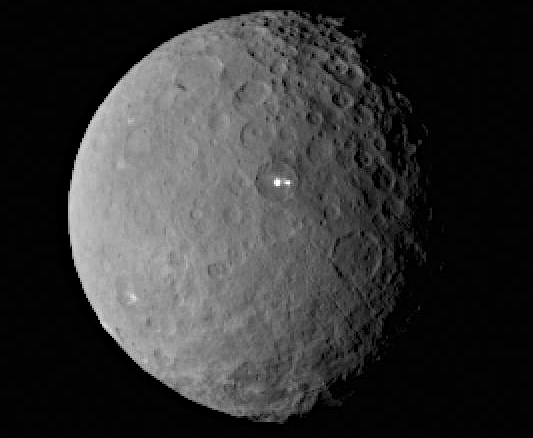 What is the asteroid belt?
What is the asteroid belt?
 The Great Comet of 1577 Shattered the Crystal Spheres
The Great Comet of 1577 Shattered the Crystal Spheres
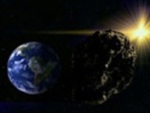 Asteroids, the threat to life...
Asteroids, the threat to life...
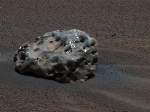 Meteorites, extraterrestrial objects
Meteorites, extraterrestrial objects
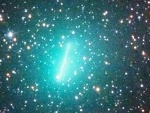 Hartley 2 passes by us, every 6 years
Hartley 2 passes by us, every 6 years
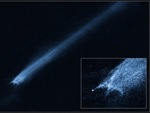 Collision between 2 asteroids
Collision between 2 asteroids
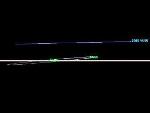 Asteroid shot, ever closer to Earth
Asteroid shot, ever closer to Earth
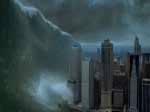 Apophis, the next disaster
Apophis, the next disaster
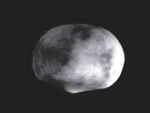 The asteroid Vesta
The asteroid Vesta
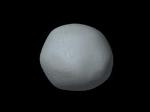 What is an asteroid?
What is an asteroid?
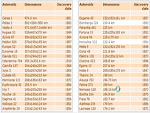 List of asteroids ordered by size
List of asteroids ordered by size
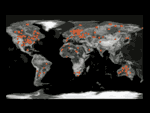 Impact craters on Earth
Impact craters on Earth
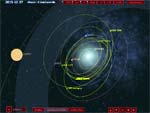 Simulator, the round of near-Earth cruisers
Simulator, the round of near-Earth cruisers
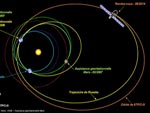 Rosetta has a date with a comet
Rosetta has a date with a comet
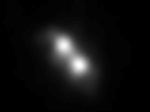 Near-Earth asteroids
Near-Earth asteroids
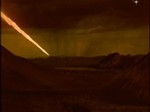 Asteroid 2009 DD45 sends us a sign
Asteroid 2009 DD45 sends us a sign
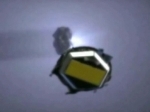 Where does the water on planet Earth come from?
Where does the water on planet Earth come from?
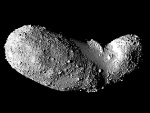 Asteroid or comet?
Asteroid or comet?
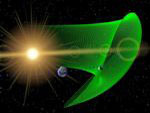 2010 TK7, Earth's Trojan asteroid
2010 TK7, Earth's Trojan asteroid
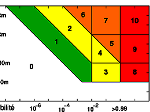 Torino scale asteroid impact risk classification
Torino scale asteroid impact risk classification
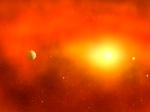 Nice model, the late bombardment
Nice model, the late bombardment
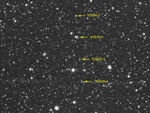 Once again we haven't seen it
Once again we haven't seen it
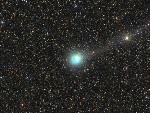 2013 the year of the comets
2013 the year of the comets
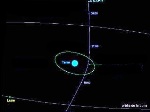 Asteroid 2012 DA14 passed on February 15, 2013
Asteroid 2012 DA14 passed on February 15, 2013
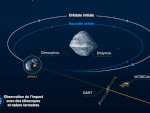 Planetary defense with Didymos and Dimorphos
Planetary defense with Didymos and Dimorphos
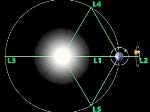 Lagrange points, L1 L2 L3 L4 L5
Lagrange points, L1 L2 L3 L4 L5
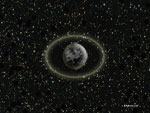 Chariklo and his two amazing rings
Chariklo and his two amazing rings
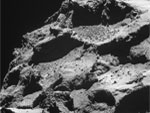 Rosetta and Philae
Rosetta and Philae
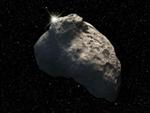 Kuiper Belt Objects
Kuiper Belt Objects
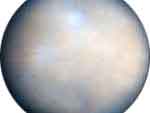 Ceres, the largest asteroid
Ceres, the largest asteroid
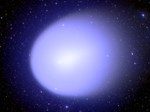 The periodic passage of comets
The periodic passage of comets
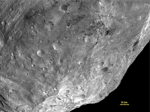 The south pole ripped from the asteroid Vesta
The south pole ripped from the asteroid Vesta
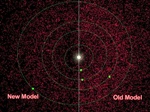 Asteroid sky map brightens up
Asteroid sky map brightens up
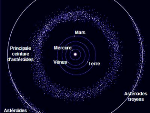 Areas with asteroids and comets
Areas with asteroids and comets
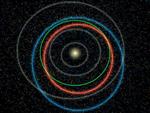 Orbits of dangerous asteroids
Orbits of dangerous asteroids
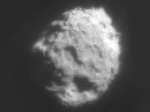 Wandering comets
Wandering comets
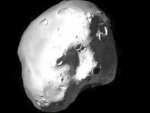 Juno disfigured by a collision
Juno disfigured by a collision
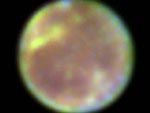 The asteroid Ganymede, near-Earth cruiser and Mars cruiser
The asteroid Ganymede, near-Earth cruiser and Mars cruiser
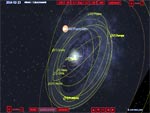 Simulator, the round of asteroids
Simulator, the round of asteroids
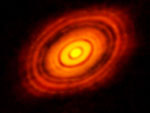 Hell of the Hadean
Hell of the Hadean
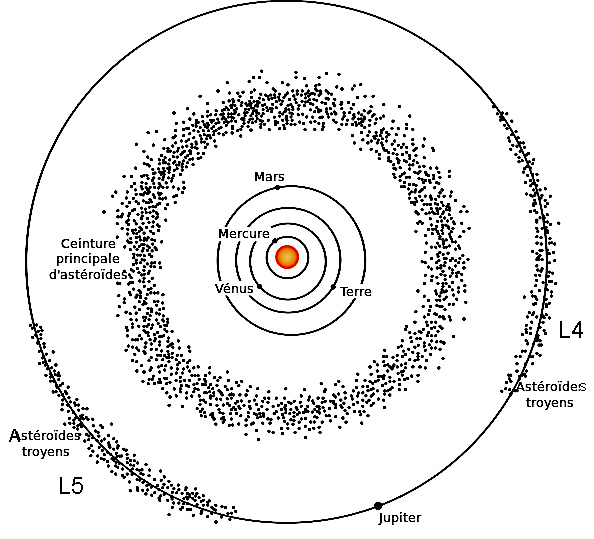 Are there natural satellites of natural satellites?
Are there natural satellites of natural satellites?